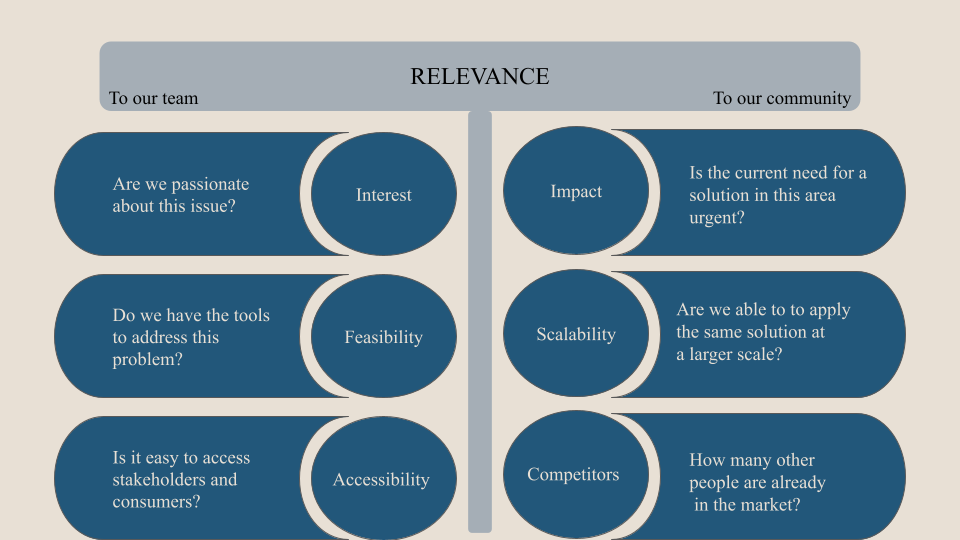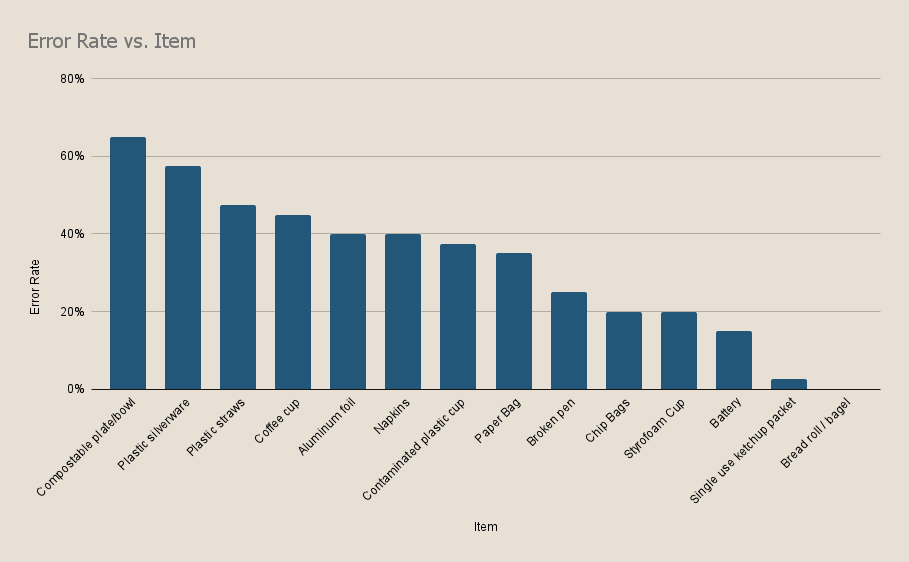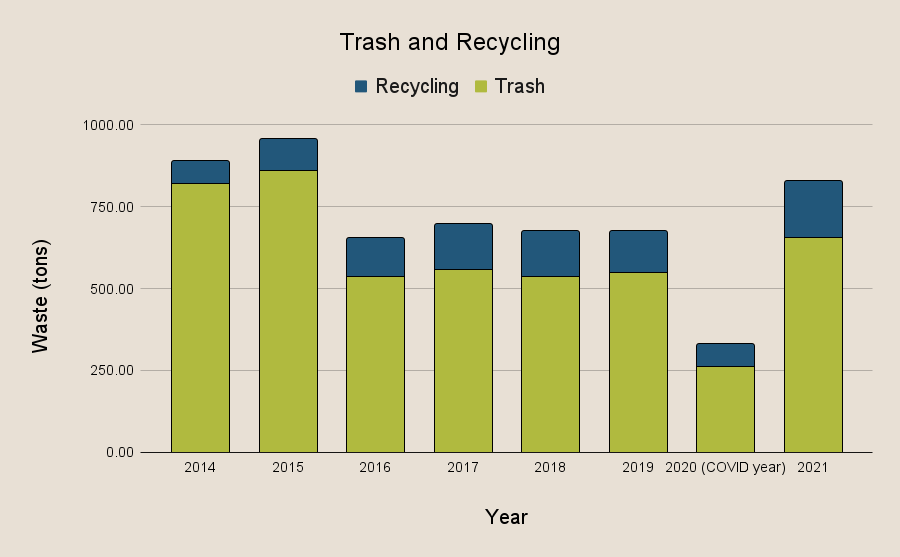To determine what motivates us, we set up metrics to measure how we felt about studying a specific topic such as education, transportation, or athletics. After voting, we were able to narrow down to two categories: waste management and health. Discussing the metrics in the figure below led us to look for problems in waste management. Waste management is a very familiar area for us due to observing daily problems in this area at home, in Easton, or on campus at Lafayette.

Waste management is a relevant area of study for our team because it’s feasible, accessible, and engages our interests. Since Lafayette has many resources surrounding sustainability, a strong foundation for this project is already established. Other information we need can be procured by interviewing professors, other faculty, and the college’s pre-established connections with the surrounding community. These resources will also be invaluable to us in discovering a problem and developing a solution. Although there are many competitors, talking to stakeholders revealed that solutions are still needed and an effective solutions could have a large-scale effect eventually. Waste management is also relevant to the surrounding community. Outside of Lafayette, an interview with Dave Hopkins from Easton Public Works echoed everything that Scott Kennedy from Lafayette Facilities mentioned due to the similar programs used to manage waste once it’s collected and sent to the larger facilities.
“The individual recyclers need to make a change,” commented Scott Kennedy, the head of the Lafayette facilities.
At Lafayette, the need for change is large which motivates the intensity of our work. Looking into prior research in waste management, we found a relevant study from a waste audit conducted at the McCartney residence halls in October of 2022 which highlighted the problem. Below is a pie chart that describes the spread of waste found at all recycling cans during the audit.

This data shows the composition of recycling, including categories such as recycling, trash, liquids, compostables, and other miscellaneous items. “According to the results of our waste audit, liquids and food made up nearly half of our waste. As you can see in our graph [above], this is a substantial number that must be addressed with solutions,” concluded Kate Rogers (Greening Athletics, p 15). When we conducted our own experiment with the student body, these recycling error results were consistent. Students were presented with a group of items to sort into recycling or trash. As seen below, the items that were most commonly sorted incorrectly were compostable plates or bowls, plastic silverware, and plastic straws.

According to the EPA, 75% of waste is recyclable (11 Facts). However, The Facilities Office revealed that Lafayette College’s recycling rate compared to trash is only near 30% because the college’s recycling contamination rate is so high. The chart below shows this and highlights the need for change.

